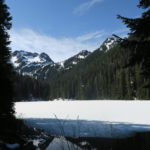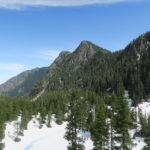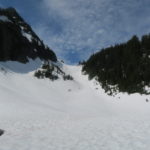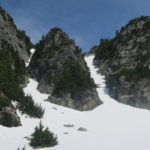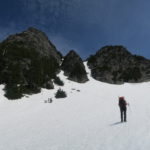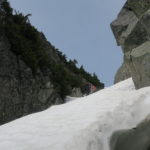2015/2016 Books Read
Well, it’s been a while since I posted about books I’ve read recently, and so I made an effort this morning to try and remember what I’ve read since my last post. I’m sure I’ve missed a good handful of books and this is a huge list so I won’t be writing much about most of them, but here goes…
Rise To Greatness: A History of Canada from the Vikings to the Present, by Conrad Black: What a tome! One of Conrad Black’s many book projects since his ignominious exit from the media business is this magisterial history of white people in Canada. A history as told from the perspective of the great men who have governed and shaped Canada, it is meticulously researched, well written, filled with colourful language, and loaded with a wealth of anecdotes from his personal communications and experience. Although it is almost comically lacking in its exclusion of the history and treatment of the First Nations, it is well worth reading.
Better, by Atul Gawande: Wonderfully named, “Better” is both about healing and making patients better as well as about the personal ambition to always improve and better oneself. Gawande’s stories from around the world of doctors and surgeons going above and beyond to do the best for their patients are engaging and interesting and although I’m not in the same profession, I take much the same attitude towards my career as he does and love his call to arms midway through the book to take your life’s work seriously. Although I am perfectly happy to accept being mediocre in most aspects of my life (for example, I’m a thoroughly middling soccer player), when it comes to my career I have always and continue to strive to be the best and to always go a step beyond what was previously believed to be possible. A great quick read.
Being Mortal, by Atul Gawande: I read this book, another by Gawande just a few weeks after reading “Better”, and although I wouldn’t say it’s quite as good, it’s still an excellent read. “Being Mortal” is an in-depth discussion of geriatric care in America, it’s often sorry state, and is a powerful call to action to improve our treatment and care of people in their last stages of life.
Gray Mountain, by John Grisham: Grisham has been on a roll lately, and Gray Mountain continues his trend of great easy to read fiction that is as entertaining as it is powerful. Gray Mountain takes place in the coal country of Virginia where Big Coal is turning ever greater profits at the expense of the health and lives of the workers that it leaves in its wake. This is the kind of novel I only read on flights, but for what it is, it’s very good.
Rogue Lawyer, by John Grisham: A recent read for a short flight home from Calgary a few weeks ago, Rogue Lawyer is the weakest Grisham book I’ve read in a long time. Essentially three short stories that tie together at the end, the characters are built up expertly, but the climax fizzles and the book ends just as its getting started. Grisham is at his best when he’s driven by a moral calling and that is lacking here.
My Idea of Fun, by Will Self: Reading this book was not my idea of fun. Sure, Will Self uses plenty of interesting language, but the story and ideas simply didn’t grab me at all. Not recommended at all.
The Girl on the Train, by Paula Hawkins: Yet another unreliable narrator novel, The Girl on the Train was recommended to me by a bookstore operator in Toronto Pearson airport. It was enjoyable enough, but the whole way through I felt like I was just reading Gillian Flynn Lite. Nothing bad, okay, so-so, whatever you want to call it, it’s fine but nothing special.
The Girl in the Spider’s Web, by David Lagercrantz: The three novels in Stieg Larsson’s posthumously published “Millennium” trilogy were both a global phenomenon as well as a lot of fun to read, with the first and the third particularly excellent. A decade later, David Lagercrantz was authorized to continue the series with a work of his own and well, it’s simply not as good. Whereas Larsson’s novels were a fun mix of intrigue, hacking, sex, and some truly dark and disturbing material, this book is simply bland. The initial set up is good enough, but it feels like Lagercrantz doesn’t know what to do with Salander once she finally appears. I’m sure this will be popular given its pedigree, but I’d just stick with the original trilogy.
Sharp Objects, by Gillian Flynn: I knew of Gillian Flynn already from “Gone Girl”, and in a short span of just a few weeks I read both this book as well as Dark Places on consecutive flights out of Vancouver on business. Sharp Objects it the story of a young journalist with a history of cutting herself who returns to her hometown to investigate a series of murders. Although Flynn’s debut work, it already showcases her trademark style, and while not fantastic, it is dark, sarcastic, and gripping right to the end.
Dark Places, by Gillian Flynn: I read this only a few weeks after reading Sharp Objects, and although dealing with a completely different subject, stylistically it is unmistakably Flynn. It’s a dark, twister, gripping tale touching on the hysteria over the 1980s supposed heavy metal Satanic cults that lead youth astray, wrong convictions, and unreliable memories.
Alan Turing: The Enigma, by Andrew Hodges: A gift from a few of my aunts for Christmas 2014, this is a wonderful biography. Turing was an undeniably brilliant man who lived with a complicated yet brief life. His contribution to the theory of computability will live on forever, and although you may have become familiar with his story through the Hollywood movie, The Imitation Game, I highly recommend reading Hodges’ book as the true story is arguably even more fascinating than the Hollywood revision.
Team of Teams: New Rules of Enagement for a Complex World, by Gen. Stanley McChrystal: Team of teams was a pleasant surprise. I started reading it expecting that it would be another book where the whole book was the title, but McChrystal has interesting insights about what a team is (the largest group of people that together thinks that everyone else sucks), and the importance of building an organization of teams where every member of each team has a friend (someone who they could call in the middle of the night if needed) on each other team. This book has surprisingly relevant insights for the software industry.
The 21 Irrefutable Laws of Leadership, by John C. Maxwell: One of the more boring business books I’ve read. Apparently this is a classic, but I found the advice to be largely obvious. It’s not that it’s awful, just bland. Go read something by Robert Greene for better anecdotes, or Jo Owen for better leadership advice.
The Sixth Extinction: An Unnatural History, by Elizabeth Kolbert: This is a fantastic pop science book that I’ve since been able to loan to a number of man-made climate change deniers and convince them to change their minds. Kolbert walks the reader through dozens of examples of anthropocenic extinctions from recent memory that are indubitably man made. Engaging and well written.
The Lost Elements: The Periodic Table’s Shadow Side, by Marco Fontani and Mariagrazia Costa: This book is marketed as a pop science book, but really is not at all. The historical details that led scientists down the wrong paths to imagine elements that were not in fact elements is interesting, but this book is written more like a research paper. It is thorough, detailed, and unfortunately dry.
The Third Reich in History and Memory, by Richard J. Evans: I love this kind of historical analysis because I think that books like this ask one of the most interesting questions. Evans doesn’t just ask “what happened” during the Third Reich, but looks also at how historians and commentators viewed the Third Reich as it was developing, and how our thoughts about the Third Reich have evolved in the decades since it ended. For example, at times during the 20th century, it was argued that the Third Reich was a natural outcome of the age of imperialism. On the other hand, at times historians argued that the Third Reich subjugated the German people whereas it is now believed that the Nazis actually had the widespread popular support of the German people. Highly recommended.
The Gap: The Science of What Separates us from Other Animals, by Thomas Suddendorf: From the dust jacket I had high hopes for this book. What I got though was a fairly basic history of primate evolution and summary of research showing what other primates are capable of as compared to humans. The book is well researched and well founded, but there are better alternatives out there.
The Improbability Principle: Why Coincidences, Miracles, and Rare Events Happen Every Day, by David J. Hand: I dunno, but perhaps I’m just the wrong audience for this book. I have an undergraduate degree in Math and Computing Science, a research based graduate degree in Computing Science, and work in the field of analytics (which requires statistical thinking). I found this short book to be extremely obvious, but perhaps for an audience with a less mathematical background it would be useful to read.
Predictably Irrational, by Dan Ariely: A birthday gift from an employee of mine (a message, perhaps?), Ariely walks readers through the gamut of cognitive biases that affect how we interact and behave in our lives. Covering much the same ground as Daniel Kahneman in Thinking, Fast and Slow, but aimed at a more popular audience and written clearly and succinctly, this is worth reading for everyone.
The Origins of Political Order, by Francis Fukuyama: The first of two volumes by Fukuyama charting the development of political order from prehistory to the present, this book rises above its peers by taking a global view of political development. Most political history books focus on the Anglo-American path, regarding that as the natural end of political development, but Fukuyama casts his net wider and shows that not all countries develop alike and that long ago differences in paths to political development have led to deep seated effects in the political environments of different countries today.
The Morning After, by Chantal Hebert and Jean Lapierre: This is a great idea for a book. Hebert and Lapierre are two well regarded and well connected journalists who travelled to meet the key players from both sides of the 1995 Quebec referendum to learn about their plans for the morning after the referendum had the voters voted “yes” instead of “no”. Some of the politicians interviewed little, but there are many great insights to be found, such as that the unified front presented by Parizeau, Bouchard, and Dumont was essentially a facade and that even between them there was little agreement on what a “yes” vote would have meant.
The Rise and Fall of American Growth, by Robert J. Gordon: I read this while on a recent road trip to Montana and Wyoming and was probably the perfect choice to read while exploring the declining fly over country that is America’s interior. Gordon’s thesis is twofold: first, that America’s growth and rise in living standards was far greater in the centry following 1876 than is evident in official GDP statistics, and second, that the remarkable growth seen during that period is unlikely to ever be replicated. Economic inequality and climate change are the two principal social issues that we have to face in the coming decades, and Gordon makes a compelling argument that we have to seek solutions to our problems outside of a belief that a magic formula would bring great economic growth that could make our problems disappear.
SPQR, by Mary Beard: SQPR is a fantastic history of Rome’s rise to its greatest period and relevant for our world today. Beard has an original style of presenting history, writing fluently and speaking to today’s world while narrating the past. Her central thesis is compelling: that Rome rose to greatness by continually expanding its right of citizenship, bringing the world into its fold, rather than by shutting its borders and pushing its neighbours away.
The Emperor’s Handbook, by Marcus Aurelius: A fancy name for a new translation of Aurelius’ Meditations, this book had been on my list to read for as long as I can remember. This is obviously not as relevant to today’s problems as a modern book on leadership or life, but it is fascinating to read the inner thoughts and contemplations of an emperor living nearly two millenniums ago.
Quiet: The Power of Introverts in a World that Can’t Stop Talking, by Susan Cain: I’d heard a lot about this book before I picked it up, but I’d always been skeptical of it because it sounds a lot like a book where the whole point is contained in the title. Introverts = important. The book turned out to be more interesting than that, and I learned about some areas of research that I was previously unfamiliar such as the work described on high reactive babies. Nonetheless, despite many interesting anecdotes, the book is longer than it needs to be to get its point across. One thought that I couldn’t get out of my mind as I read it: are introversion and extroversion really innate character traits or can they be learned, or perhaps even be dependent on environment or situation? I’m not so sure that the spectrum is as black and white as Cain makes it sound.
The Mindset of Success, by Jo Owen: Jo Owen’s “How to Lead” has long been one of my favourite books on leadership and it’s one that I return to every few weeks to refresh myself on another few nuggets of insight, and this appreciation for his work led me to pick up “The Mindset of Success” last summer. I in particular have always been drawn to Owen’s view that leadership is a practice, not an innate character trait. More focussed and simpler in scope than his other books, Owen uses the book to dive into the mindset needed to succeed in career, life, and other endeavour. Not quite as good as his other books, but still worthwhile.
How Not To Be Wrong: The Power of Mathematical Thinking, by Jordan Ellenberg: I loved the title of this book before reading it, and after reading it I think it’s a great idea for a book. Ellenberg does a fantastic job at explaining the value of learning mathematics and how its tools can be used to understand the world and its complexities.
Zermelo’s Axiom of Choice: Its Origins, Development, and Influence, by Gregory H. Moore: There’s a review for this book on Amazon that calls it a “truly thrilling history” of the axiom of choice. I really don’t know that that would ever be possible. The Axiom of Choice is a fascinating topic of study, both because of its independence from the other axioms of ZF set theory, and because how its needed to prove many useful parts of mathematics while at the same time leading to seeming absurdities like the Banach-Tarsky paradox. Well researched, interesting, but also very dry reading and not for a popular audience. Note that my copy had some printing errors (misaligned pages, for example).
Fearless Symmetry, by Avner Ash and Robert Gross: Let’s get it out of the way: this is not a book for a true layman. Even with a thorough understanding of undergraduate mathematics and a good knowledge of some parts of graduate mathematics (not number theory, mind you), this book required effort to get through and understand. At the same time, it was totally worth it. Ash and Gross do a great job of building up the mathematics and especially the motivation behind the mathematics needed to understand reciprocity laws, Galois groups, and the tools that would eventually be used to prove Fermat’s Last Theorem. Fearless Symmetry does a better job of explaining the wonder and complexity of the Galois group better than any source I’ve previously encountered.
This Changes Everything: Capitalism vs. the Climate, by Naomi Klein: This is probably Klein’s weakest work, not standing up to the greatness of her previous books. Whereas I loved No Logo and enjoyed the Shock Doctrine, it’s not entirely clear who the intended audience is for this book. The majority of details presented are already known by those who care, but the writing and anecdotes are too bland to appeal to those who still need to be convinced that man made climate change is the principal issue of our era. This Changes Everything is noble, but regrettably not great.
The Clean Coder: A Code of Conduct for Professional Programmers, by Robert C. Martin: Every programmer should have to read this book, plain and simple. While the latter half largely focusses on TDD, the first few chapters are essential. So many developers enter the workforce unaware of what it truly means to be a professional programmer, what it means to write quality code, when to say yes, and when to say no. Some people are put off by Uncle Bob’s opinionated nature, but I love this book and wish I could get all of my new developers to read it.
Just Enough Software Architecture: A Risk-Driven Approach, by George Fairbanks: Software architecture is an interesting term because on one hand, everyone in the industry knows what architecture refers to (“those parts of a system that are hard to change”), but at the same time, most people including many architects don’t know how one should go about defining architecture. Fairbanks explains how to define architecture by identifying the risks affecting a piece of software being developed and using the right set of models to model what the architecture should be. This is knowledge that every architect or senior developer should have.
Behind Closed Doors: Secrets of Great Management, by Johanna Rothman and Esther Derby: This is an interesting book in that it’s essentially a series of dialogs of a new manager engaging in one on ones with a new team. It’s a small book, but I’ve bought a copy for each of my managers to read because I think too many mangers jump into doing one on ones without really thinking about what their goals are and what they want to accomplish.
Management 3.0: Leader Agile Developers, Developing Agile Leaders, by Jurgen Appelo: Management 3.0 is a weird book. It’s kind of a brain dump of all of the models and ideas that Appelo has run into in his quest to become a good Agile development manager. It’s interesting to pass through, but not essential reading.
The Scrum Field Guide: Practical Advice for Your First Year, by Mitch Lacey: Another book on Scrum that I read while running a large software development project, this is pretty good, but I’d jump straight to Cohn’s book generally.
Implementing Lean Software Development: From Concept to Cash, by Mary and Tom Poppendieck: “Lean” software development is a bit of an odd idea because it’s a set of principles and not a process. The reason I say that it’s odd is because I don’t know that anyone could ever disagree with the principles, such as to “eliminate waste” or “build quality in”. Perhaps the only really controversial principal is to “defer committment”. Nonetheless, this book is a good read, and Chapter 2, on the principles of lean software development should be required reading for any software development manager.
Succeeding Using Agile: Software Development Using Scrum, by Mike Cohn: My favourite book on Scrum. Cohn is a great author and does a great job at explaining how to practically implement Scrum and put it to use. I wish I could get all of my scrum masters to read this.
Computability: Turing, Godel, Church, and Beyond, edited by B. Jack Copeland, Carl J. Posy, Oron Shagrir: A great collection of papers by some great minds. A few of the papers are perhaps overly specific, but there are many of interest to anyone with an interest in the theory of computability, such as Aaronson’s paper on whether philosophers should care about computational complexity. Recommended.






































































